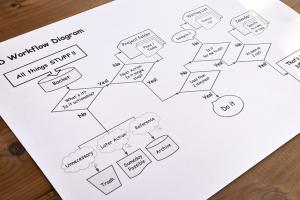Pulse
Latin America's Perfect Storm
Originally published by Global Americans.
Healthcare’s Jobs to Be Done (Part 2): Application
Clay Christensen’s insights on disruption and innovation have shaped my perspective on health industry transformation and featured prominently in both of my books. In Part 1 of this series, I detailed his pathbreaking work on “Jobs to be Done (Jobs)” at Harvard Business School. By understanding what “jobs” customers “hire” products to do, innovative companies can design their products to get those jobs done.
Emerging Markets on the Cusp: Part Two- Emerging Markets and Global Risks
This article is the second of a series about the challenging global environment facing Emerging Markets/Developing Countries (EM/DCs) living with the legacy of the pandemic and the Ukraine war. In this series, we want to apply the techniques of Country Risk Analysis to assess the changing risk environment, especially as it applies to a potential debt crisis.
Nicaragua: Dictatorship and Collaboration with Extra-Hemispheric U.S. Rivals
This work looks at how the Sandinista regime of Daniel Ortega and Rosario Murillo in Nicaragua has further clamped down on dissent and consolidated power since the rigged November 2021 Presidential elections, and how it is increasingly serving as an entry-point for expanded activity in the region by Russia, Iran, and the PRC.
Healthcare’s Jobs to Be Done (Part 1): A Primer
I’ve been an admirer of Clay Christensen’s work since the late 1990s. Shortly after he published The Innovator’s Dilemma in 1997, Christensen headlined a Merrill Lynch global retreat for managing directors. During his keynote address, he presented and applied his theory of disruptive innovation. I was mesmerized.
Hidden Damages: August Spotlight 2022
Is Covid just a dress rehearsal? What have we learned about living with our biological and geopolitical adversaries?https://www.washingtonpost.com/health/2022/08/19/long-covid-brain-effects/
Emerging Markets at the Cusp: Part One-The Past as Prologue
This article is the first of a series about the challenging global environment facing Emerging Markets/Developing Countries (EM/DCs) living with the legacy of the pandemic and the Ukraine war. In this series, we want to apply the techniques of Country Risk Analysis to assess the changing risk environment, especially as it applies to a potential debt crisis.
The Evolution of Peru’s Multidimensional Challenges, Part II: Transnational Organized Crime
Peru’s crisis of politics and governability has reinforced economic and fiscal pressures from the COVID-19 pandemic and increased in food and fuel prices due to the ongoing war in Ukraine, to greatly complicate grave challenges from transnational organized crime and terrorism in the country. Those crises have also undermined the resources available to the country to effectively respond through investing in the modernization, adaptation, and strengthening of its security institutions, and other parts of its whole-of-government response.
Japan’s Vulnerability If There’s A New Recession
How will Japan fare if rising interest rates and the war in Ukraine send the US and Europe into a new recession? Not well, if history is any guide. It all depends on the length and depth of any recession—that is, if one even occurs. But the record shows that Japan’s economy is very susceptible to outsized reactions to economic shocks, including downturns originating elsewhere.


 by
by 
 by
by 
 by
by 


 by
by 



 by
by 